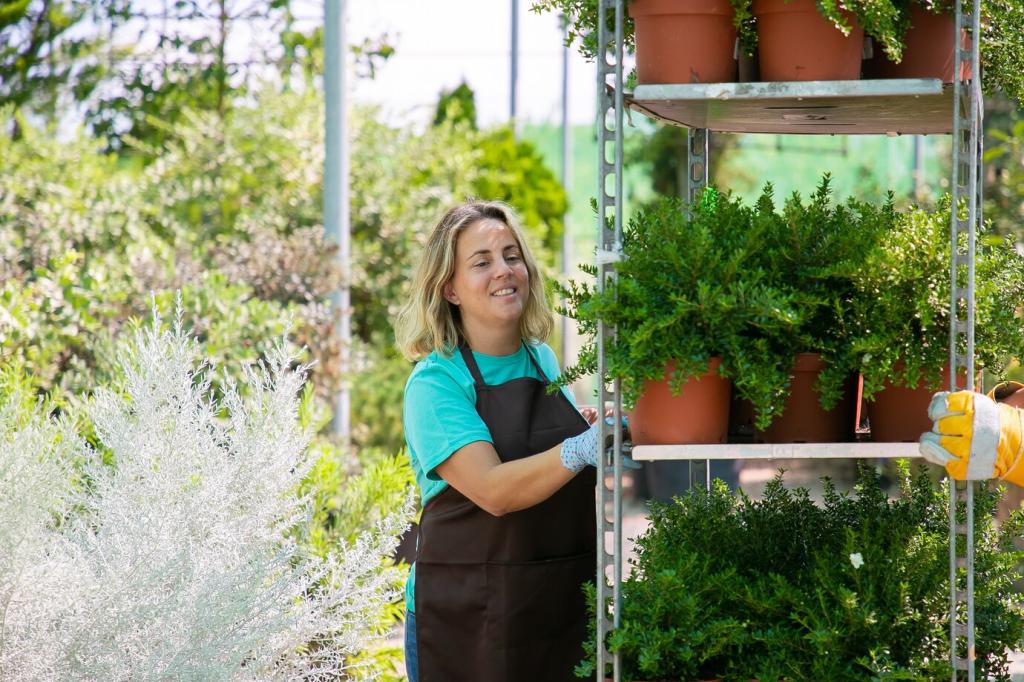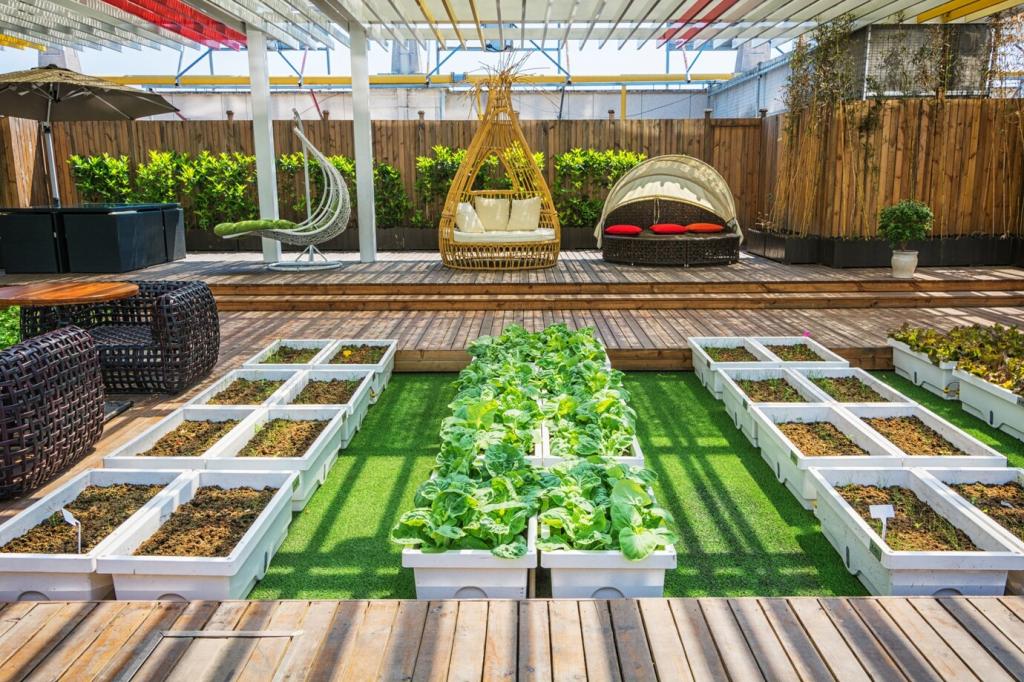
Vertical Gardening Solutions for Urban Dwellers
Discover how vertical gardening can transform city living by turning small spaces into lush, green sanctuaries. Whether you have a tiny balcony, a bare wall, or a compact patio, vertical gardens allow you to enjoy the benefits of nature, boost your mood, and even grow your own food—all within the constraints of urban environments.
Harnessing Vertical Space in the City
Making the Most of Balconies
Many city dwellers have access only to a small balcony, but vertical gardens can amplify the greenery without cluttering the area. By installing wall-mounted planters, hanging pots, or modular stacking systems, you can transform your balcony into a thriving oasis. Plants such as herbs, succulents, and trailing vines flourish when given a vertical home, providing both privacy and natural beauty. This approach not only enhances the aesthetics but also offers a pocket of relaxation amid a bustling city landscape.
Indoor Green Walls
For those with limited outdoor access, indoor green walls present an innovative way to invite nature inside. Living walls utilize custom panels or pockets that can be mounted on interior walls, creating a stunning visual focal point and improving indoor air quality. These installations are suitable for apartments or offices and can be designed with various plant species tailored to thrive indoors. Besides their purifying qualities, indoor green walls contribute to a healthier environment and make spaces feel more vibrant and inviting.
Utilizing Unused Urban Corners
Every city home has odd corners or underutilized nooks that often go neglected. Vertical gardening solutions such as freestanding columns, tension rod systems, or leaning structures can turn these spaces into miniature vertical jungles. By making use of these forgotten spots, you can maximize your living area, increase your plant collection, and enjoy the soothing effects of greenery in every part of your home.


Low-Maintenance Urban Favorites
Selecting low-maintenance plants is essential for busy city dwellers. Consider hardy, drought-tolerant varieties like pothos, snake plants, or succulents that require minimal watering and care. These resilient species thrive in less-than-ideal conditions, making them ideal for urban garden beginners and experienced green thumbs alike. Their ability to withstand fluctuations in temperature and humidity makes maintenance less of a chore, ensuring your vertical garden remains lively and lush with minimal intervention.

Edible Greens for Food Security
For those passionate about fresh food, integrating edible plants into your vertical garden can provide year-round herbs, lettuce, strawberries, and more. Compact, fast-growing varieties are perfectly suited to vertical planters and pocket systems. Not only does this support sustainability by reducing food miles, but it also brings the satisfaction and flavor of homegrown produce to your apartment or rooftop. Even with a tight schedule and limited space, urban dwellers can supplement their meals with healthy, fresh food grown steps from the kitchen.

Shade and Sun Considerations
Urban environments often have specific lighting challenges—skyscrapers may block the sun, or certain windows may have intense, direct exposure. Choosing the right mix of shade-loving and sun-thriving plants is key. Ferns, ivy, and peace lilies are great for shadier corners, while basil, tomatoes, and petunias love sunny spots. Understanding your space’s microclimate ensures your vertical garden blooms, no matter the orientation or location within the city.
Essential Structures and Systems for Vertical Gardening
Wall-mounted planters are a favorite among urban gardeners due to their ability to create living artwork with minimal intrusion. These systems attach directly to walls, fences, or other vertical surfaces and vary in size, material, and arrangement. They can be as simple as repurposed pockets or sophisticated modular panels with built-in irrigation. This flexibility allows for creative designs and tailored plant placements, making the most of limited wall real estate while ensuring each plant’s accessibility for watering and care.
Watering and Maintenance Made Simple
Automated drip irrigation systems are a game-changer for vertical gardens, providing consistent moisture without manual effort. These systems can be set on timers or connected to app controllers, ensuring your plants receive the right amount of water regardless of your schedule. Efficient water use means less waste and the peace of mind that your plants won’t suffer during vacations or work trips. Such systems also reduce runoff and help distribute nutrients evenly throughout your garden.
Improving Air Quality and Wellbeing
Urban air can be thick with pollutants and particulates, but vertical gardens serve as living filters, trapping dust and absorbing carbon dioxide. Plant leaves naturally purify indoor air, reducing the presence of toxins such as formaldehyde and benzene found in city environments. This leads to cleaner, fresher air within your living or working space, helping to combat allergy triggers and respiratory issues, while also making interiors feel more inviting and comfortable.


Choosing Color and Texture
Selecting a mix of plant species with different leaf colors and textures elevates the visual appeal of vertical gardens. Combining bold foliage with delicate blooms or mixing trailing vines alongside upright species adds depth and intrigue. These artful juxtapositions bring movement and dimension to a flat wall or balcony railing, turning your vertical garden into a living piece of art. Thoughtful selection also allows for seasonal interest, ensuring year-round vibrancy regardless of changes in weather.
Layering for Visual Impact
Strategically arranging plants in layers creates a sense of abundance and depth. Place larger, statement plants at the base or center, while trailing and cascading varieties can spill over the edges for a lush effect. Layering not only maximizes the use of available space but also mimics natural growth patterns, making your garden look rich and full. By integrating different heights and forms, you achieve a dynamic, harmonious display that draws the eye and never feels monotonous.
Incorporating Decorative Elements
Complement your vertical garden with decorative accents like mirrors, fairy lights, or artistic trellises. Thoughtfully chosen accessories can reflect light, enhance mood, and tie your garden to your overall décor. Integrating functional features, such as built-in seating or shelves, can further enhance usability without disrupting the garden’s natural beauty. Such additions personalize your green space, making it truly unique and inviting within the city’s concrete bounds.
Sustainability Benefits for City Living
Energy Efficiency and Insulation
Living walls provide extra insulation for buildings, which can help regulate indoor temperatures and reduce energy consumption. The natural shading from dense foliage blocks harsh sunlight during summer, while the insulating effect reduces heat loss in winter. This passive energy-saving feature supports lower utility bills and creates a more comfortable living environment, all while reducing your ecological footprint within the city.
Stormwater Management
Urban areas are prone to flooding due to non-permeable surfaces that prevent water from seeping into the ground. Vertical gardens absorb rainwater and slow its runoff, reducing strain on city drainage systems during storms. By mitigating surface water flow, these gardens contribute to healthier soil and cleaner waterways, helping cities manage water resources more effectively and responsibly.
Biodiversity Support
Vertical gardens offer critical habitat and food sources for local birds, bees, butterflies, and other pollinators that are often displaced in dense urban environments. By planting pollinator-friendly species, city dwellers expand green corridors and support fragile ecosystems right outside their windows. This not only protects biodiversity but also enhances the vibrancy and productivity of the garden itself, fostering a healthier urban environment for all.
